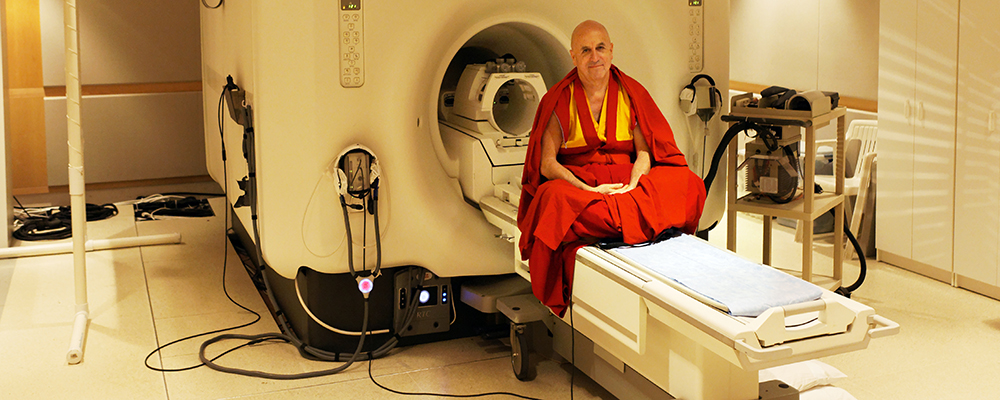
Part of an Ongoing Series on Buddhism Demysitified
Science can be defined as a rigorous empirical investigation of reality with the goal of discovering and explaining natural phenomena and predicting how they function. Its field of study covers not only external phenomena, something that physics and biology focus on, but also the way in which the mind works. This falls under psychology and exploring the nature of experience that is the domain of introspection, phenomenology, and the understanding of the nature of our own mind.
Science does not lend itself to blind faith or dogmas, nor to empirically unverifiable hypotheses. Most religious beliefs that are based on dogmas, such as the creation of the universe, are unverifiable and, therefore, fall outside the realm of science. It is precisely this dogmatic aspect that makes most dialogues between science and religion so tricky and difficult.
The case for Buddhism is somewhat different since its mission, from the start, is to bridge the gap between appearances and reality (i.e. between the way we perceive things and their true nature). We have a tendency, for example, to perceive certain things or entities as being permanent and inherently existent, when in fact they are impermanent and interdependent, that is, devoid of independent existence.
Before the start of the Christian era, Buddhism had already put forward a proposal refuting the existence of indivisible particles, one that was far more sophisticated than the proposal offered in ancient Greece by Leucippus and Democritus who described atoms as “having hooks”. Around the 1st century AD, Buddhist philosophers wrote treatises on the theory of perception that are surprisingly modern. Furthermore, one of the Buddhist philosophical branches, called pramana, which is based on a very sophisticated system of logic, seeks to establish a “valid cognition” of reality.
Buddhism is naturally in sync with dialogues with scientists because of its investigative and intellectual studies. The main stumbling block between Buddhism and present-day science lies in the investigation of the nature of consciousness, a most complex issue. According to Buddhism, consciousness is a primary fact that is not necessarily linked to the functioning of the brain; this, of course, does not represent the opinion of the vast majority of neuroscientists.
However, the Dalai Lama has often stated that should science disprove certain Buddhist theses using compelling evidence then these should be dropped without hesitation. The Dalai Lama declared that the traditional Buddhist cosmology (itself based on the same Hindu cosmology that existed in India 2,500 years ago) is now obsolete given current scientific knowledge. This is indeed a bold statement, akin to the Pope declaring that the idea of the creation of the world in six days should now be abandoned.
This open-minded approach has made it possible to have dialogues and fruitful collaborations between science and Buddhism. In 1987, the neuroscientist Francisco Varela and an American lawyer Adam Engle created the Mind and Life Institute, an organization to facilitate this dialogue between Buddhism and science. The Mind and Life Institute has made it possible for the Dalai Lama to meet some of the leading contemporary scientists. Over the years, it has broadened its objective to include dialogues between contemplative sciences in general and modern science with meditators from other religious traditions.
Since its inception, the Mind and Life Institute has organized approximately 30 meetings (that last from 2 to 5 days) between contemplatives and some of the most respected representatives of various disciplines, from quantum physics to neurosciences, including psychology, education, environmental sciences, and solidarity economy. Several Nobel laureates have participated in these meetings such as Steven Chu, winner of the Nobel Prize in Physics, and Daniel Kahneman, winner of the Nobel Prize in Economics. More than one thousand scientists attended the Mind and Life meeting at M.I.T., Boston, in 2003.
There is also now a European branch of the Mind and Life Institute. I helped to organize one of its meetings in September 2016 (in Brussels) on the theme, “Power and Care.” This meeting with the Dalai Lama brought together leading experts, including the ethologist Frans de Waal, the anthropologist Sarah Blaffer Hrdy, the environmentalist Johan Rockström, the economists Dennis Snower and Paul Collier, the neuroscientist Tania Singer, the Rabbi Awraham Soetendorp, the Dominican Brother Thierry Marie Courau, Dean of the Faculty of Theology and Religious Studies at the Institut catholique de Paris in France, the Canadian Muslim Aala Murabi, the peaceful activist Maori Pauline Tangiora, and the Nobel Peace Prize winner Jody Williams.
The European branch of the Mind and Life Institute is chaired by Amy Cohen-Varela, Francisco Varela’s widow. Its board members include the neuroscientists Wolf and Tania Singer, who are research directors at the Max Planck Institute in Frankfurt and Leipzig. Until recently, I too was a board member of both the Mind and Life Institute in the USA and Europe, and I have participated in over twenty meetings.
For more information on the Mind and Life activities: https://www.mindandlife.org/